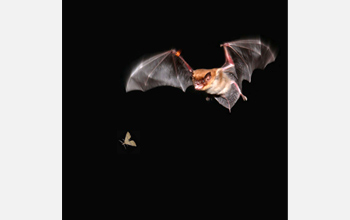All Images
News Release 08-107
What It's Like to Be a Bat
Bats' vocal sonar does more than locate objects; it cues memory and assists flight
This material is available primarily for archival purposes. Telephone numbers or other contact information may be out of date; please see current contact information at media contacts.

New research explores data that shows the high-pitched chirps bats make produce changes in brain activity that may be important for helping them "picture" and analyze their environment, turn their head and ears, and cue memory. The research, which looks beyond the last 40 years of research into how bats process sound, may eventually benefit people who are blind.
Credit: National Park Service
Download the high-resolution JPG version of the image. (59 KB)
Use your mouse to right-click (Mac users may need to Ctrl-click) the link above and choose the option that will save the file or target to your computer.
Cynthia Moss, a member of the Neuroscience and Cognitive Science program at the University of Maryland, College Park, Md., talks about how bats emit sounds and use echolocation to picture environments, cue memory and assist flight.
Credit: University of Maryland and National Science Foundation

When a bat pursues prey such as a moth, it computes the 3D location of objects in its environment from information carried by the echoes of its voice.
Credit: Photo by Jessica Nelson
Download the high-resolution JPG version of the image. (512 KB)
Use your mouse to right-click (Mac users may need to Ctrl-click) the link above and choose the option that will save the file or target to your computer.
